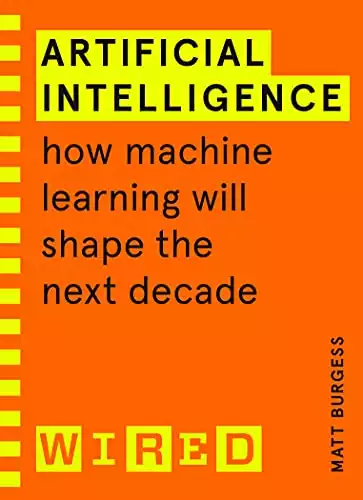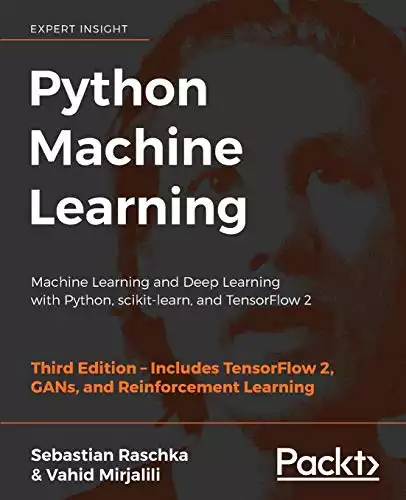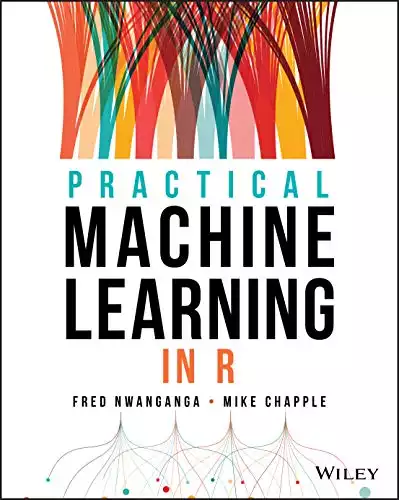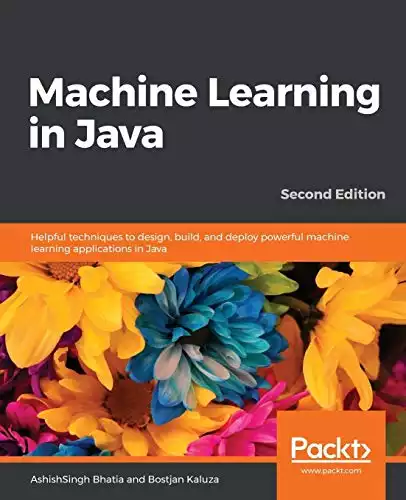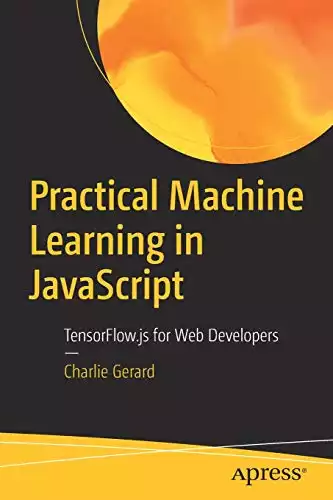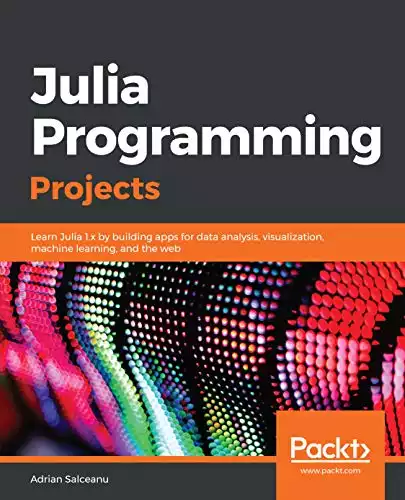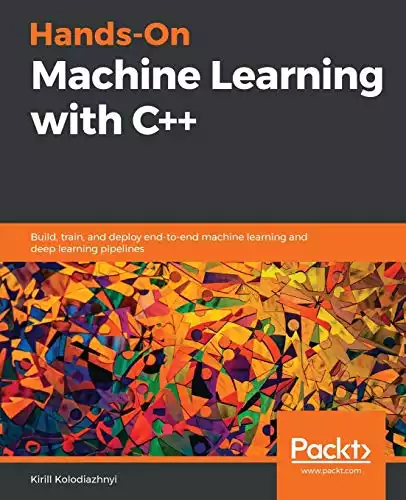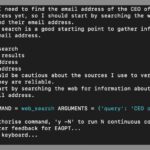Introduction
Artificial intelligence (AI) and machine learning (ML) have almost become part of everyday conversation. Beyond being buzzwords, these concepts also represent career opportunities. Machine learning engineers are among the most sought-after employees in the technology sector right now.
If you are looking to break into this exciting field, you may be wondering what level of programming skills you really need. Plus, which popular programming language should you learn? With hundreds of languages to choose from, you are spoilt for choice of programming language. Here is a guide to seven of the most powerful languages.
Table of contents
Also Read: Kotlin vs Python: What is the Difference?
What is Machine Learning?
Before we look at individual programming languages, it is worth clearing up some of the terms of machine learning. Machine learning is a subfield of artificial intelligence. Linear algebra is the foundation of ML. ML algorithms allow computers to learn from experience without explicit human interference.
Rather than mimicking human intelligence, the concepts of machine learning apply one of the key behaviors of humans – the ability to learn. As the algorithm learns more, its predictive modeling becomes more accurate and therefore more valuable for the people using them.
Machine learning techniques and their results have already become part of our daily lives with numerous examples of practical application. Anyone using cloud computing services or receiving recommendations on Netflix, Amazon, or other subscription services is looking at the effects of ML. The same goes for suggested connections on social media networks. Machine learning algorithms are the power behind those recommendations. ML has also been used in self-driving cars and financial analysis.
Deep learning is a subfield of ML that goes beyond basic machine learning in an attempt to mimic the workings of neural networks in our brains. Neural networks are critical to computers making decisions similar to human decisions.
How Much Programming Knowledge is Required to Learn ML?
No-code language or base-level code software applications have become extremely popular over the past decade or so. But can you forge a career in machine learning without programming knowledge? The answer is no for most people. However, how much programming knowledge you need to know depends on what exactly your role is going to be and what you want to do with ML.
To become a machine learning engineer, you need to know more than the basics of machine learning. Saying that, there is no need to learn all, or even a handful, of the existing programming languages. Most engineers in the field of machine learning focus on developing programming skills in one or maybe two programming languages and become experts in those.
You need to be able to generate executable code in a format that can be run on the operating systems your computing hardware uses.
7 Best Languages for Machine Learning
With hundreds of ML programming languages to choose from, selecting the best option for machine learning projects can be difficult. For someone new to the field, it can also be difficult to determine the most popular language or in-demand programming languages. Here is a look at seven of the most popular and widely-used primary languages to help you pick one to get started with. Eventually, the type of project you will be working on determines your programming language of choice.
1. Python Programming Language
If you work in IT or a related field, you have probably heard of Python as a programming language. According to a survey conducted by Toward Data Science, more than half of all data scientists and ML developers used this language in 2017.
More recent data confirms the popularity of this programming language. In 2021, IEEE Spectrum ranked Python first among popular programming languages. Industry estimates show that more than eight million developers worldwide work with Python, and this is the only programming language that has been growing consecutively for five years.
One of the reasons for Python’s popularity is its extensive collection of libraries, including a neural network library. These core libraries make it easy for machine learning engineers to access and process data easily. Engineers like the independence of the platform, too.
Now, Python is the leading programming language for data analytics, sentiment analysis, and data science. The language is being used by Google, meta, Dropbox, Walt Disney, and other household names. Its popular library of code and package services put it far above its current competition.
If you’re new to ML and there are no specific reasons that would prevent you from choosing Python over its competitors, this is the most popular machine learning programming language to learn.
Also Read: How Long Does It Take To Learn Python
2. R Programming Language
R programming language was written by a statistician for other statisticians. This language currently has more than two million users and 12,000 packages to its name. A LinkedIn group of R users has more than 40,000 members, all speaking to the popularity and usability of this tool. Plus, you do not need to be a fully fledge programmer to use it. Basic programming skills are enough to help you access R for data analytics or data mining, for example.
When would you choose R over Python? Whenever your application requires statistical analysis, such as processing biomedical statistics, R truly comes into its own. The language’s capability to apply the principles of statistics to big data makes it an excellent choice for training ML algorithms to predict future events.
Aside from statistical computing, this language also features a variety of tools and packages that support creating decision trees and simplify data manipulation. Apart from decision tree formation, R stands out for its visualization package. This wide variety of machine learning techniques also includes supervised and unsupervised learning.
Another advantage of the R programming language is its cross-platform compatibility. Even when R is performing tasks in its own language, ML engineers can mix it with other tools to optimize outcomes. Last but not least, R is a fairly easy programming language to learn.
3. Java
Java has been called the “jack of all trades” of programming languages. It is hugely popular with programmers and is starting to gain ground with machine learning practitioners as more programmers with a Java background enter ML.
Plus, many organizations already maintain Java codebases from other projects, and countless open-source tools have been written in this language. Choosing Java as a programming language for ML projects simplifies their integration with existing code repositories. This can save time and resources for organizations. Moreover, Java simplifies the scaling of projects, which is a priority for many machine learning engineers. The Java Virtual Machine improves productivity by allowing engineers to write efficient code on multiple platforms for machine learning at once.
Although Java continues to trail Python and R when it comes to general popularity and usage for ML applications, it triumphs in the areas of network security, preventing cyberattacks, memory management, and fraud detection. This is perhaps no surprise considering that these issues predominantly affect large organizations which have long favored Java for software and application development. It is the language of choice for financial institutions and financial analysis.
4. JavaScript
Do not be fooled by the similarity in their names: JavaScript (JS) is neither overly similar nor related to Java. Granted, they have a few things in common, but JS is considered a lightweight programming language or scripting language, simplifying memory management.
This language is mostly used to make webpages more interactive by inserting dynamic features into classic HTML programming. These characteristics have made JavaScript incredibly popular and turned it into one of the most widely used languages.
Its popularity is now stretching into machine learning applications, including random number generation. The most high-profile project written in JS is perhaps Google’s Tensorflow.js. Tensorflow is a platform that helps users implement best practices for data automation, performance monitoring, and the retraining of a variety of tools. It is one of the technologies powering Facebook’s face recognition tool, DeepFace. Apple’s Siri also relies on Tensorflow for voice recognition.
As more powerful libraries are becoming available in JS, this programming language is likely to gain ground among machine learning developers. Those popular libraries allow programmers to bring artificial intelligence to existing web applications.
Industry experts believe that JS has several critical advantages over Python and R. It is faster than Python, accelerating development processes for organizations. Plus, JS keeps data safe because it is not able to access files on an ML user’s computer. Combined with its popularity among programmers, this language is likely to grow more influential over the coming years.
5. Julia
Julia is perhaps the programming language most likely to become a serious competitor to Python and R. This dynamic language is packed with features that have been developed exclusively for machine learning models. Because it is a general-purpose programming language, Julia can also be used to write a wide range of other performance-critical applications, making it an exciting choice.
Corporations like Apple and Disney, and organizations like NASA are using Julia to program some of their machine learning applications. This language excels in computational science and numerical analysis. Julia was designed to implement basic scientific computing queries and relatively simple mathematical models. Those are the underlying premise of most machine learning algorithms.
What makes Julia even more attractive is its ability to create scalable machine learning apps. Julia makes it easier to deploy applications quickly at large clusters. ML tools like Tensorflow, Flux, and MVBase are already taking advantage of this, allowing machine learning engineers to save time.
Developers have found that Julia works extremely well for science-guided artificial intelligence and ML. This approach is being used in climate modeling and applications predicting epidemics, for example.
Also Read: How To Get Started With Machine Learning In Julia
6. LISP
Think of LISP as the forerunner to the likes of Python, Java, and Julia. Created by budding electronics engineer John McCarthy in 1958, it is the second-oldest programming language that remains in use as a functional language today. Its name is simply an abbreviation of the term ‘list processing.’ Symbolic expressions were invented especially for LISP. There are a few reasons for LISP’s enduring popularity.
First, LISP can run code in more than 30 programming languages, making it an excellent choice for code readability. Moreover, it is also considered to be one of the most flexible ML languages because of its ability to adapt to the solution someone is coding for. To this day, this sets LISP apart from other ML programming languages.
We also have LISP to thank for the very first artificial intelligence chatbot, and eCommerce businesses continue to use this application for chatbots. LISP works perfectly for artificial intelligence projects that are heavy on ML because of its rapid prototyping capability and its automatic garbage collection feature.
So, why is not everyone coding in LISP? LISP is not supported by any popular machine learning libraries. It is also difficult to learn compared to modern programming languages, and it lacks the community support and user interaction that Python and R have.
7. C++
Number seven on our list of programming languages is C++. C++ is a powerful programming language that facilitates object-oriented programming and is growing in popularity in ML. Like Java and JavaScript, programmers who are already familiar with this language will find it easier to add ML to their repertoire as opposed to learning an entirely new language.
Even if you are not already skilled in C++, this programming language is worth considering. It works more efficiently than other languages and has been used to implement some of the most popular libraries like Torch and Tensorflow.
At the moment, C++ is mostly being used by developers who are hoping to enhance existing projects with machine learning. It is not as popular for apps that are being developed entirely based on ML. It lends itself to Internet of Things applications as well as augmented reality and virtual reality or engineering projects.
On the other hand, if you are building an app that relies on natural language programming (NLP), languages like Python offer already-existing popular libraries to help facilitate your project. Being able to draw on those extensive libraries will give you a competitive advantage in your field.
Conclusion
Understanding the fundamentals of programming is necessary for developing effective machine learning systems. This collection of machine learning languages does not contain a domain-specific language like HTML. Instead, these languages can be used for multiple purposes.
Access to libraries and library management are key facilitators to getting started with ML programming languages. Apart from that, choosing an ML programming language based on a language you already know will simplify the learning process. Remember, there is no right or wrong programming language for all machine learning applications. Each has advantages and disadvantages. The task at hand and your resources should guide your decision.
References
Axen, Seth. “State of Machine Learning in Julia.” Julia Programming Language, 11 Jan. 2022, https://discourse.julialang.org/t/state-of-machine-learning-in-julia/74385. Accessed 14 Feb. 2023.
Chatterjee, Marina. “What Is TensorFlow? Installation, Basics, and More.” Great Learning Blog: Free Resources What Matters to Shape Your Career!, 22 Sept. 2022, https://www.mygreatlearning.com/blog/what-is-tensorflow-machine-learning-library-explained/. Accessed 14 Feb. 2023.
“Introduction to TensorFlow.” TensorFlow, https://www.tensorflow.org/learn. Accessed 14 Feb. 2023.
“Machine Learning.” GeeksforGeeks, 30 May 2018, https://www.geeksforgeeks.org/machine-learning/. Accessed 14 Feb. 2023.
Machine Learning in JavaScript. https://www.w3schools.com/ai/ai_javascript.asp. Accessed 14 Feb. 2023.
Mahendra, Sanksshep. “Introduction to Machine Learning Algorithms.” Artificial Intelligence +, 2 Oct. 2022, https://www.aiplusinfo.com/blog/machine-learning-algorithms/. Accessed 14 Feb. 2023.
Nation, Developer. “What Is the Best Programming Language for Machine Learning?” Towards Data Science, 11 Dec. 2019, https://towardsdatascience.com/what-is-the-best-programming-language-for-machine-learning-a745c156d6b7. Accessed 14 Feb. 2023.
—. “What Is the Best Programming Language for Machine Learning?” Towards Data Science, 11 Dec. 2019, https://towardsdatascience.com/what-is-the-best-programming-language-for-machine-learning-a745c156d6b7. Accessed 14 Feb. 2023.





